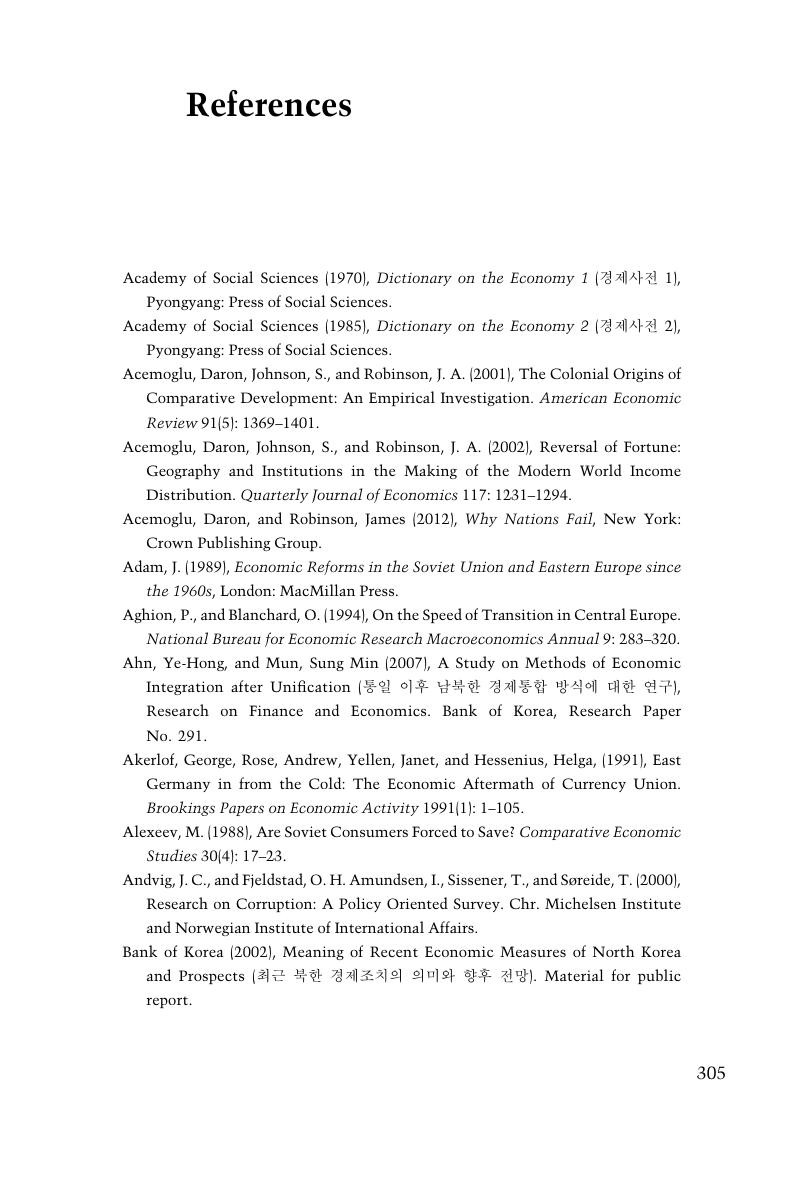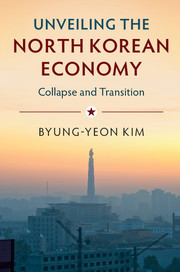Book contents
- Unveiling the North Korean EconomyCollapse and Transition
- Unveiling the North Korean Economy
- Copyright page
- Contents
- Figures
- Tables
- Acknowledgements
- Introduction
- 1 An Evaluation of the Socialist Economy
- 2 The North Korean Economy
- 3 Transition of the North Korean Economy
- Conclusion
- References
- Index
- References
References
Published online by Cambridge University Press: 01 June 2017
- Unveiling the North Korean EconomyCollapse and Transition
- Unveiling the North Korean Economy
- Copyright page
- Contents
- Figures
- Tables
- Acknowledgements
- Introduction
- 1 An Evaluation of the Socialist Economy
- 2 The North Korean Economy
- 3 Transition of the North Korean Economy
- Conclusion
- References
- Index
- References
Summary

- Type
- Chapter
- Information
- Unveiling the North Korean EconomyCollapse and Transition, pp. 305 - 322Publisher: Cambridge University PressPrint publication year: 2017

